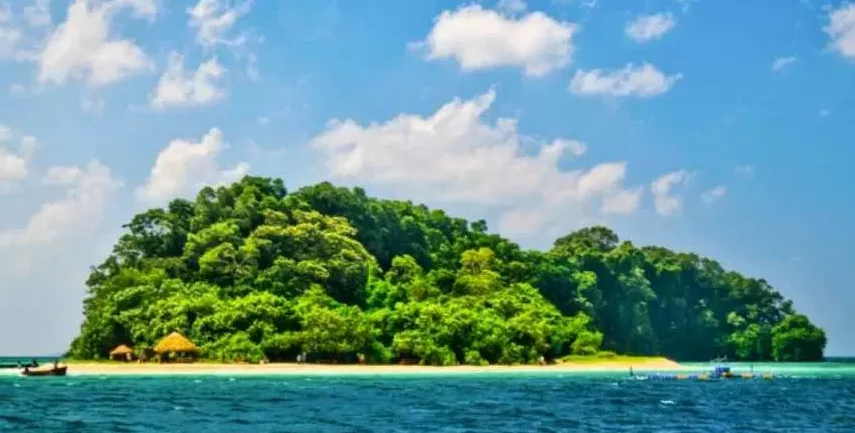Imagine a landmass entirely surrounded by water, isolated from the rest of the world. From the massive expanse of Greenland to the tiny coral atolls of the Pacific, islands are among Earth’s most fascinating geological features. Yet, not all islands are created equal. Some broke away from ancient continents, while others rose violently from the ocean floor as volcanoes. Understanding these differences—Continental vs. Oceanic—unlocks the secrets of unique biodiversity, strategic geopolitics, and human history. Dive into this comprehensive guide to understand the formation, types, and critical importance of the world’s islands.
Island

An island is a land mass completely surrounded by water. Geographers classify islands as continental, which were once attached to continents and include types such as individual islands (e.g., Newfoundland and Madagascar), archipelagos, and island arcs, and oceanic, formed away from land and further divided into volcanic (Hawaii, Galápagos, Azores) and coral islands (Marshall Islands, Tuvalu, Bermuda). Understanding their formation and biodiversity highlights why islands are vital for ecosystems, cultures and economies.
Key Facts
- Continental islands: Detached parts of continental landmasses; include individual islands, archipelagoes and island arcs.
- Oceanic islands: Located in open oceans; have no geological link with continents and often serve as remote stop‑overs.
- Volcanic islands: Peaks of underwater volcanoes; examples include Hawaii, Galápagos, Azores, Ascension, Madeira and Canary Islands.
- Coral islands: Low‑lying islands built by coral organisms; examples are Marshall Islands, Gilbert (Kiribati), Tuvalu and Bermuda.
- Artificial islands: Man‑made structures built on reefs or reclaimed land, such as Flevopolder in the Netherlands and Dubai’s Palm Jumeirah & Palm Jebel Ali.
- Importance: Earth hosts ~175 000 islands inhabited by over 600 million people; islands and surrounding seas cover about one‑sixth of the planet’s surface; they shelter over 50 % of marine biodiversity and many coral reef hotspots; however, 64 % of species extinctions occur on islands and two‑thirds of nations include island territories
What is an Island? Definition & Geography
An island refers to a piece of land entirely encircled by water. Such landforms may exist individually or as clusters, situated within open seas or oceans. Smaller variants, holding only local importance, are also observed in lakes and rivers. Broadly, islands can be categorized based on their origin of formation into the following two major classifications.
Continental Islands: Formation & Characteristics
These islands originally constituted a part of the continental landmass and have since become detached. The separation might have occurred due to the subsidence of a section of land or an increase in sea level, causing low-lying regions to become inundated. Such divisions may manifest as either shallow lagoons or deep sea channels.
The prior linkage of these islands to the adjacent mainland can be inferred through their similar physical characteristics, including geological structures, as well as comparable flora and fauna existing on both sides of the dividing channel. Over time, the influence of human activity and natural elements may result in distinct surface transformations.
Continental islands are further sub-divided into the following types:
Individual Islands
These are located just off the continental boundary and maintain notable associations with the features of the mainland from which they once separated. Prominent examples include Newfoundland, lying beyond the mainland across the Strait of Belle Isle, and Madagascar, situated across the Mozambique Channel.
Archipelagos: Clusters & Island Groups
These consist of collections of islands varying in dimension and form. Noteworthy illustrations encompass the British Isles, the Balearic Islands within the Mediterranean, and those scattered throughout the Aegean Sea.
Island Arcs & Geological Festoons
These islands collectively form archipelagic chains, usually loop-shaped, positioned around the continental periphery. They often represent a geological extension of mountain systems identifiable on the adjoining landmass. Predominantly, such arcs result from the subduction of one oceanic tectonic plate beneath another, typically leading to the generation of magma beneath the overriding plate. Examples include the Andaman and Nicobar Islands, the East Indies, the Aleutian Islands, the Ryukyu Islands, the Kurile Islands, and various other Pacific coastal island arcs.
Oceanic Islands: Isolation & Evolution
These islands are typically small in size and situated in the heart of the oceans. They possess no geological linkage to any continental landmass, which may lie hundreds to thousands of miles away. The flora and fauna of these islands are generally unrelated to those found on the continents. Due to their isolation from major global trade routes, the population density on most oceanic islands tends to be extremely low. Nevertheless, some of these islands serve as strategic halts for aircraft and ocean liners navigating the intercontinental sea routes.
Oceanic islands are primarily classified into the following two fundamental types:
Volcanic Islands (Hotspots & Seamounts)
A substantial number of islands located within the oceans are actually the elevated summits of volcanic cones projecting from the seafloor. While the majority of these volcanoes are dormant, certain ones remain active. Among the most notable volcanic formations is Mauna Loa in Hawaii, widely recognized within the Pacific Ocean. Additionally, other volcanic islands have originated along the submarine ridges that span various oceans.
• In the Pacific Ocean, volcanic islands appear in several distinct clusters, such as Hawaii, the Galapagos Islands (belonging to Ecuador), and numerous islands within the South Seas.
• Within the Atlantic Ocean, such examples include the Azores (Portugal), Ascension Island, St. Helena, Madeira (Portugal), and the Canary Islands (Spain).
• In the Indian Ocean, Mauritius and Réunion (a French overseas territory) are prominent examples.
• The Antarctic Ocean features Bouvet Island and the South Sandwich Islands.
Coral Atolls & Low-Lying Islands
In contrast to volcanic islands, coral islands are generally much lower in elevation, often just rising above sea level. These landforms are created through the accumulated activity of coral organisms, comprising various species, and are located both close to the continental coastlines and within the open ocean. Key examples of coral islands include:
• The Marshall Islands, the Gilbert Islands (now part of Kiribati), and Tuvalu (formerly the Ellice Islands) situated in the Pacific Ocean.
• Bermuda, a British Overseas Territory, located in the Atlantic Ocean.
Laccadives and Maldives of the Indian Ocean
The Laccadive Islands and the Maldives are prominent coral archipelagos located in the Indian Ocean. These tropical island chains are characterized by low elevation, composed predominantly of coral atolls and reefs. Their formation is natural, resulting from the accumulation of coral deposits over geological timeframes. These island systems are ecologically sensitive, and their floral and faunal biodiversity is distinct from that of continental ecosystems.
Artificial Islands: Man-Made Engineering Marvels
An artificial island refers to a man-made landmass, constructed through human intervention by either expanding existing islets, reclaiming land from water bodies, or by developing entirely new landforms upon reefs or shallow marine zones adjacent to coastlines. The construction of such islands has been a human endeavor practiced for centuries. Among the most noteworthy examples is the Flevopolder in the Netherlands, recognized as the world’s largest artificial island.
Contemporary Developments (as reported in The Hindu, June 2012)
Political leaders in Israel proposed a strategic expansion of their coastal territory through the creation of artificial islands, reflecting the growing global interest in engineered land reclamation.

Palm Islands
The Palm Islands are a pair of artificial islands situated in Dubai, United Arab Emirates, meticulously designed to resemble palm tree shapes. These two islands—Palm Jumeirah and Palm Jebel Ali—are among the most iconic examples of modern engineering and coastal development. They demonstrate the use of advanced construction techniques for land reclamation, aiming to support tourism, residential, and commercial infrastructure in the region.
The Threat of Climate Change: Will Islands Disappear?
While islands are biodiversity hotspots, they are also the most vulnerable landforms to the global climate crisis. Rising sea levels, driven by melting polar ice and thermal expansion, pose an existential threat to low-lying oceanic islands, particularly coral atolls.
Nations like Tuvalu, the Marshall Islands, and the Maldives sit just meters above sea level. Scientific models predict that even a modest rise in ocean levels could render these territories uninhabitable within decades, leading to the phenomenon of “climate refugees.”
Beyond land loss, rising ocean temperatures cause coral bleaching, destroying the living reefs that protect islands from storm surges. Increased ocean acidification further weakens the calcium carbonate structures of coral islands. For these island nations, climate change is not a distant theory—it is an immediate geopolitical and humanitarian emergency requiring urgent global action.
Importance of Islands
• The planet comprises approximately 175,000 islands, collectively inhabited by over 600 million people, highlighting their significant demographic value.
• Islands, along with the surrounding oceanic zones, account for nearly one-sixth of the Earth’s total surface area, underscoring their global geographical relevance.
• These insular regions support some of the most distinct and geographically isolated ecosystems, including:
o Over 50% of global marine biodiversity, reflecting their crucial ecological role
o Seven of the world’s ten primary coral reef hotspots, vital for marine conservation
o Ten of the thirty-four most biologically rich regions globally, making them biodiversity reservoirs
• Approximately 64% of all documented species extinctions have occurred on islands, indicating their ecological vulnerability.
• More than two-thirds of the world’s sovereign states possess territorial islands, affirming their strategic and geopolitical significance.
• Island ecosystems deliver a diverse array of essential ecosystem services, supplying food, freshwater, timber, fiber, medicinal resources, fuel, tools, and other vital natural materials. Furthermore, they offer aesthetic beauty, spiritual enrichment, educational opportunities, and recreational benefits. The economic resilience and livelihood sustainability of island communities are fundamentally dependent on their native biodiversity.
